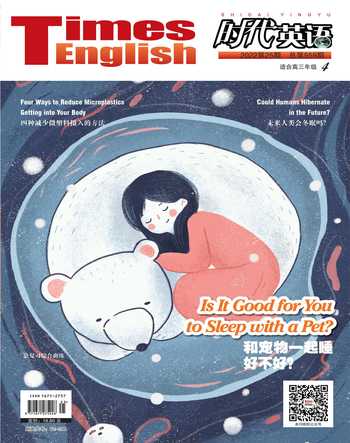Storing Seeds for the Future 为未来储存种子
2022-11-10

The Germplasm Bank of Wild Species (GBOWS) is a research and preservation facility for rare and endanger ed plant s and animals . It is the largest in Asia in terms of species.
With two in five plant species at risk of extinction, it is a race against time to p r o t e c t t h e n a t i o n ' s incredible plant life.
So how does the bank work? Scientists collect endangered and useful wild species and send them to the seed bank . For future study, collectors have to record details of the plant, including where it was found, its size and the number of individual plants in the habitat.
Once the seeds arrive at GBOWS, they're dried and preserved in a room with 15 percent humidity . Next, they're cl e an ed a nd separated from debris. After that, X-rays confirm that the seeds are undamaged and no insects are hidden inside. The seeds are then frozen, stored in glass bottles and placed in huge freezers at ﹣20℃ for long-term storage . Each co n tai n er h a s a b a r c od e that can be scanned to enable scientists to view information about the seeds inside.
中國西南野生生物种质资源库,是一个研究、保藏珍稀濒危动植物的综合设施,也是亚洲最大的野生生物种质资源库。
由于五分之二的植物濒临灭绝,保护国内那些珍贵的植物生命是在与时间赛跑。
那么,中国西南野生生物种质资源库是如何运作的呢?科研人员采集濒危的、有用的野生物种,并将种子送到种质资源库。为了将来的研究,接收种子的科研人员必须记录这种植物的详细信息,包括采集地点、种子的体积、周围环境中单株植物的数量等。
中国西南野生生物种质资源库接收种子后,会对种子进行干燥处理,并将其放置在相对湿度15%的环境中。接下来,科研人员会将种子清理干净并将其从残渣中分离出来。那之后,还会对种子进行X光拍照,以确保种子无损伤、无虫害。随后,种子将被冷冻,储存在玻璃瓶中,放置在零下20摄氏度的巨大冷库中长期保存。每个玻璃瓶都有一个条码,科研人员可以通过扫描条形码来查看瓶内种子的信息。
Word Study
debris /'debriː/ n. 碎片;残渣
Clear away leaves and other garden
debris from the pond.
barcode /'baːrkəʊd/ n. 条形码
